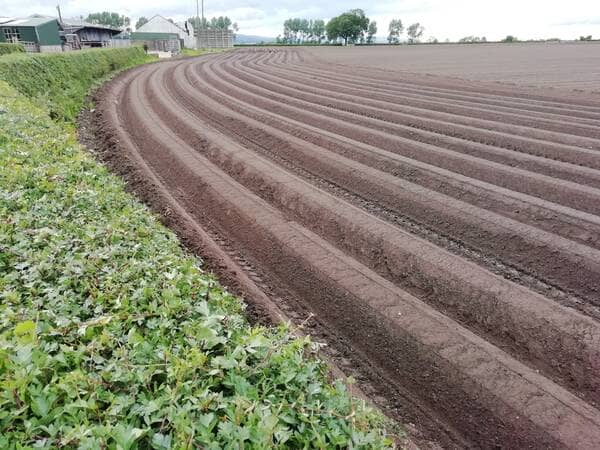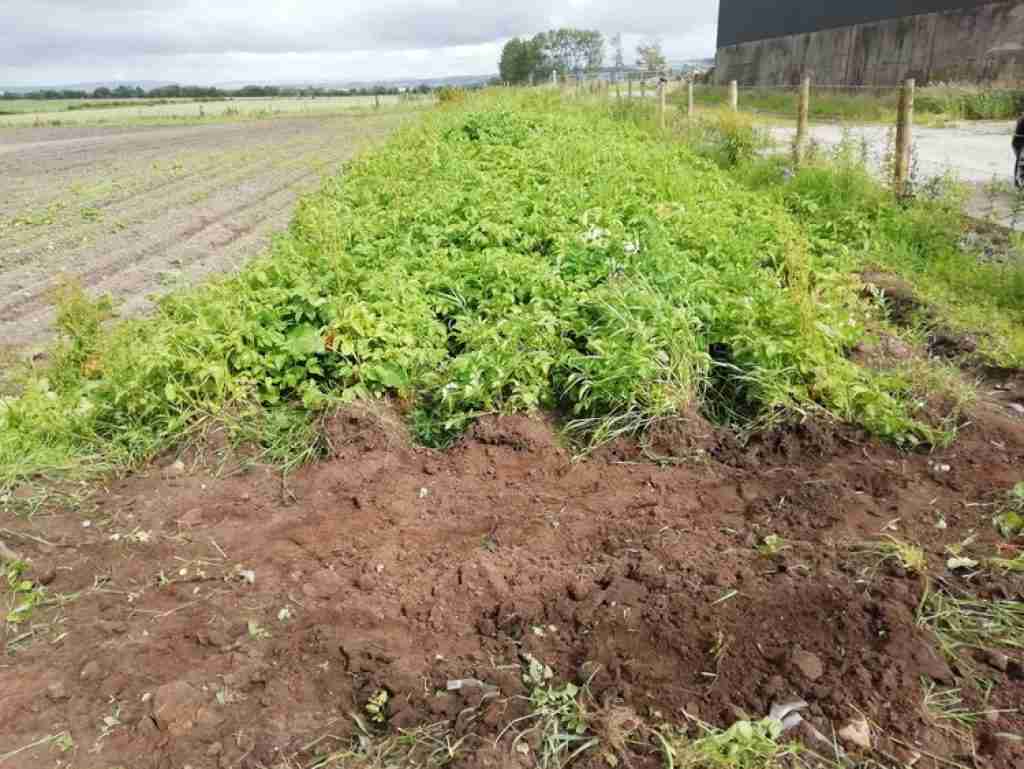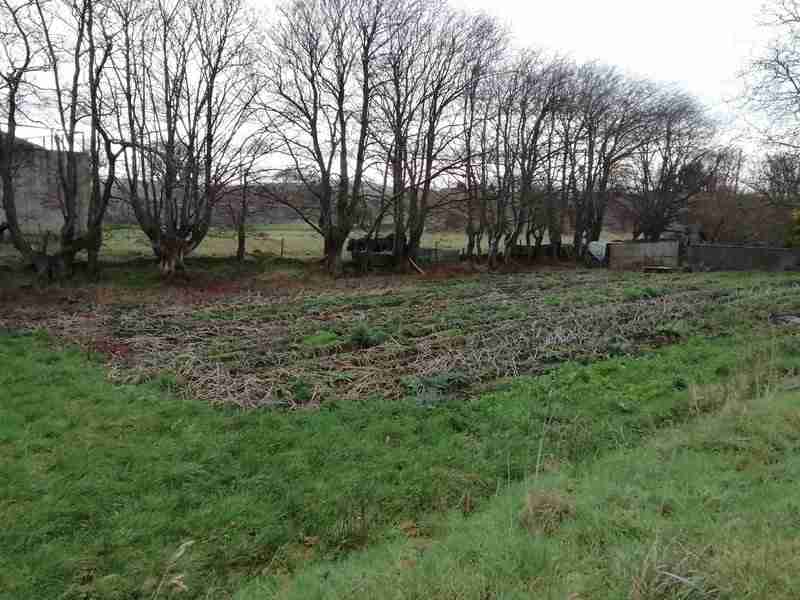Potatoes are easy-to-grow vegetables that will grow in nearly any soil. However, you should aim to provide the best soil for potatoes by following the steps I have outlined below. They do best in soils with a pH between 6.0 and 6.5. Providing potatoes with good soil, adequate nutrients, and plenty of water will increase your potato yield and help prevent diseases.
The best soil for potatoes
Potatoes will grow in nearly any soil but will grow best in a free-draining, fertile, sandy loam soil that is high in organic matter, at a slightly acid pH of 6.0 to 6.5.

Sandy loam soil is defined as soil that contains between 43 and 52 percent sand with less than 50 percent silt and less than 7 percent clay, explains the University of Michigan Extension.
To determine the percentage of each particle (sand, silt, and clay) in your soil, Oregon State University Extension recommends the jar test. Here’s how to do it.
- Pour ½-cup of soil into a jar. Make sure the soil is free of rocks or other debris and is clump free.
- Add one tablespoon of Calgon water softener.
- Seal the jar and shake vigorously for five minutes.
- Place the jar in an area where it will not be disturbed and let it set for 24 hours.
- Measure and note the depth of the soil that has settled at the bottom of the jar.
- Shake the jar again for about five minutes to thoroughly mix the soil particles and water.
- Let the mixture rest for 40 seconds and measure the depth of the settled soil. This is the amount of sand in your soil. Jot the measurement down as you will need it later.
- Wait another 30 minutes and measure the soil depth again. Subtract the measurement for the sand from this number to determine the amount of silt your soil contains.
- Subtract the above measurements from the total soil depth to determine the number of clay particles in the soil, as the clay particles will remain suspended in the water.
To convert your measurements to percentages, change them to fractions and multiply by 100%. For example, if the sand layer is 1 inch and the soil depth is 2 inches, change it to the fraction (1/2) and multiply by 100%. Your soil contains 50% sand. Repeat the process with measurements for other soil particles to determine the percentage of each in your soil.
Keep in mind that this is an estimation of the percentages of the soil particles in your soil.
USDA provides an online soil texture analyzer that you can use once you have calculated the percentages of sand, silt, and clay in your soil. This will determine the type of soil you have in your garden.
Why is loam soil the best for growing potatoes?
Loamy soil contains enough sand particles to allow water to drain through the soil after rains and helps prevent issues with waterlogged soil that can lead to diseased or rotting potato tubers. The clay and silt particles prevent the soil from draining too quickly and leaving the roots too dry.
Loam also provides good aeration, so the roots have the oxygen they need to thrive and carry moisture and nutrients to the plants. Because loam is loose, it allows roots to grow deep into the soil, providing more support for the plants.
Potato tubers need plenty of room to grow freely under the soil. Loam gives them the room they need and is light enough to allow the tubers to grow and expand.

What can I add to my soil to make it better for growing potatoes?
Amending the soil with organic matter, such as well-rotted manure or finished compost, is a great way to improve the texture of the soil and provide slow-release nutrients to your potato plants.
Organic matter works to improve aeration and promote good drainage. It is recommended for improving sandy soil as well as improving the soil with high amounts of clay.
To add organic matter to your soil, prepare it by cultivating the soil to a depth of 8 to 12 inches and remove any stone, sticks, or other debris found in the soil. Stones surface during the winter as the soil freezes and thaws and must be removed yearly. Potato tubers need loose soil that is free of stones and other debris to form uniform tubers.
What pH should the soil be for potatoes?
Potatoes prefer slightly acidic soil with a pH between 6.0 and 6.5 but will grow in soil with a pH as low as 5.0. Potatoes grown in alkaline soil with a pH of 7.0 or above are susceptible to scab, a potato disease that affects the tubers. Scab causes rough spots on the tubers. Although it does not affect the potatoes’ flavour, the blemishes ruin your potatoes’ appearance. To avoid issues with potato scab, keep the pH below 6.5.
What type of fertilizer should be added?
Use a 5-10-10 fertilizer for your potatoes and mix it into the soil at planting time. Or learn how to make your own homemade potato fertiliser. While many garden vegetables prefer 10-10-10 fertiliser, too much nitrogen (represented by the first number in the trio) can cause the potato foliage to flourish while inhibiting the growth of the potato tubers.
Why are soil moisture and drainage important for growing potatoes?
Potatoes need moisture for the roots to uptake nutrients, but too much water in the soil can lead to tubers rotting (or sprouting when they mature in the fall) in the soil. Potatoes need soil that drains away excess water during heavy rains but retains enough moisture to keep the roots and plants hydrated.
Potatoes need lots of water, especially during dry spells, to maintain enough moisture to support the foliage and the growing tubers.
Summary
Planting your potatoes in fertile, free-draining sandy loam soil with lots of organic matter will provide them with the best conditions to thrive. Remember to check your soil pH, and soil moisture levels too, this should set you on track for the best crop of potatoes yet. Good Luck!



